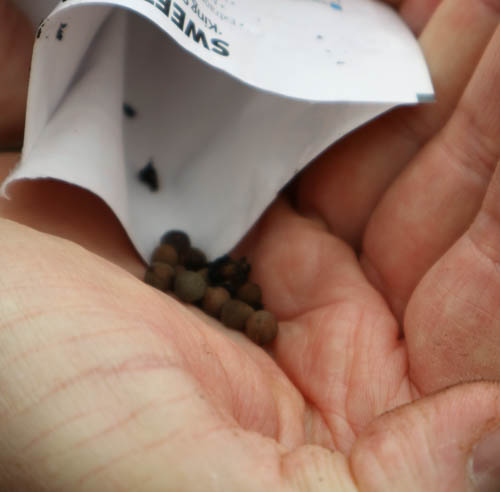
This is the time of year when the greenhouse becomes a plant production line, and shows its value for side stepping the effects of the weather – particularly in cooler areas. It’s also the time when you will be rewarded for the hours spent washing pots and trays during winter.
Sow the following in trays or modules: lettuce, leaf beet and chard broad beans, brassicas like cabbage, calabrese, cauliflower, lettuce, peas for pods and shoots, salad onions; turnip, radish, beetroot, kohlrabi, leeks in pots or modules, under glass. Sow celeriac, spinach and turnip early in the month.
From the middle of the month onwards, sow the herbs dill, basil, pots of coriander plus melons, squash and cucumber seeds on edge in modules or 7.5cm pots of multipurpose or John Innes no 1 potting compost ready for planting out in May once the danger of frost has passed. They can be germinated in a propagator at 15-18C (60-65F) and the compost kept moist with tepid water.
Protect newly sown peas, broad beans and sweetcorn from mice by dipping the seeds in concentrated liquid seaweed and allowing them to dry before sowing or covering the pots with fine mesh wire. If there is a spell of warm days and cold nights, which often happens this month, it is a good time to sow parsley as the ‘high and low’ temperatures break the seed dormancy; always use fresh parsley seed (and parsnip, too) as they don’t germinate well from old seed. Most seed can be sown in seed compost, or finely sieved multipurpose compost, mixed with 25% perlite to improve drainage, so you can water them every day without fear of the compost becoming waterlogged. Bring the compost into the greenhouse to warm for 24 hours before sowing. Large seeds like peas, beans and sweetcorn can be sown in straight multipurpose compost but before you do, break down the large lumps by rubbing them between your fingers, and removed any debris.
Don’t sow all of the seeds in each packet, save some for successional sowing so crops mature right through the season. Once the danger of frost has passed, hardy crops like lettuce and beetroot can be sown directly into a seedbed, outdoors.
Tomatoes, can be potted on as they outgrow their existing pots until they are large enough to put into a 30 cm (12”) pot; aubergines, peppers and Chillies can be potted on until they are large enough to go into a 25cm (10”) pot. I grow my tomatoes in the greenhouse border, where they can develop a decent root system and watering is not so critical and plant basil or peppers in the foreground among French Marigolds to discourage white fly and root nematodes.
Water seedlings using tap water rather than rainwater to avoid fungal problems with ‘damping off’. Allow the water to stand for at least 24 hours in the greenhouse to warm before using it on your seedlings and plants.
Keep seedlings well ventilated and shaded to prevent sun scorch, opening the vents to avoid cold draughts and temperature fluctuations.
Happy Gardening! Matt


